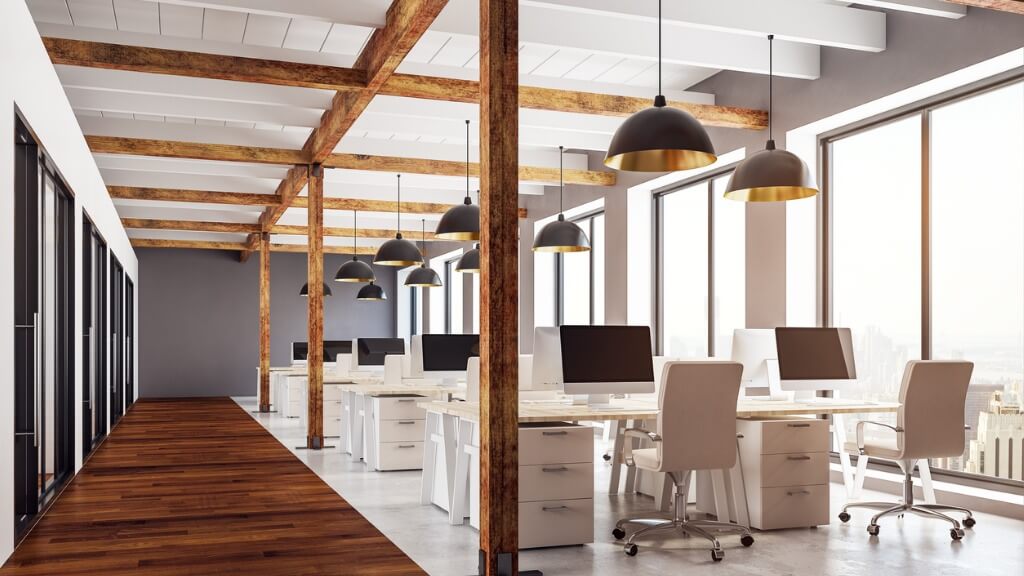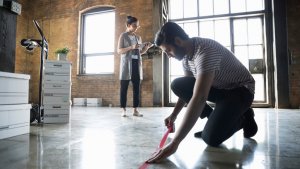What Can Hospitality And Retail Teach Us About Office Design?
Returning to the office will give us a chance to see working environments in a new light.

The hospitality and retail sectors look at space in a very different way to office managers. These differences in approach are comparable to the variation between B2B and B2C offerings.
Organisations have not traditionally looked at their own staff as customers. However, attitudes to the workplace are changing. The office is no longer the default place of work. Remote working has become the norm.
A central workplace is still as important as ever but for organisations that never had a workplace reach its full potential, the benefits may not be obvious. Tired, traditional designs and generic spaces have very little to offer above remote working.
In the post-pandemic era, when remote working has been shown to work, these spaces will not attract staff back to them.
While many workers have appreciated skipping the commute to and from the office, remote working has distinct downsides that office design needs to combat.
Socialising, informal learning, and collaborative creativity have become near impossible to do effectively during the pandemic and as a result, much of the workforce has suffered.
But poorly designed workplaces without spaces for both collaboration and quiet focussed work actually fair little better than remote work and present other downsides such as a time-consuming commute, struggles to focus in open-plan spaces, and now, the threat of Covid-19 and other illnesses that we previously thought little of.
As we return to the workplace, we must take a different approach to design, proactively creating spaces that support employees and encourage them to return. Quadrant Design calls this human workplace design.
Office design for the future
Human workplace design learns and takes inspiration from all spaces that people use in order to create human-centric spaces.
The workplace design sector has begun to realise how much potential there is to learn from other spaces rather than trying to design the workplace in a vacuum. Biophilic design, for example, has long been known to benefit staff wellbeing. However, the sector is too often mired in its own tradition to make real changes.
The hospitality and retail sectors have a lot to teach us about creating spaces that people want to spend time in. A major part of hospitality’s offering is its space and retail is reliant on increasing customer dwell time. So, what can these spaces teach us?
- Flexibility
The flexibility to use space as suits is a massive benefit that can easily make the difference between a member of staff deciding to work from home or in the office.
For those looking to socialise and reconnect after the pandemic, being stuck in separate working areas without the opportunity or space to gather informally won’t cut it.
Employees would rather work from home, save time and energy on their commute, and be able to meet friends as soon as they sign off for the day. Equally, for those looking for a space to get their head down and focus, a busy, open-plan office space will be far less appealing than a quiet seat at home.
We are looking at the workplace as agile, adaptable spaces that can be shaped and reshaped as needed. A few years ago, we saw a rise in coffee shop working – though in reality it has been around for over a century – and such an atmosphere has been shown to boost creative output.
Ambient noise can be helpful to some, but quiet, focused spaces for intense work or calls should also be available. What if we could capture the best parts of coffee shop working and combine them with the best parts of the office?
- Reflecting company culture
For retail and hospitality spaces, design that reflects company culture is a must. Walking into an unfamiliar shop, customers can usually make an estimate on product price without looking at a single tag, simply from design and layout.
For me, working with Pizza Express was a fantastic way of learning about workplace design. Each restaurant is unique, reflecting the local environment and the history and architecture of the building.
To achieve this, we researched the local area and the history of the site. The design, architecture, artwork, furniture, lighting and even the music playing in the restaurant would reflect that individual story. Workplaces should be honed with the same attention to detail, for the sake of both staff and clients.
Walking into an office building as a client or potential client is equivalent to a customer walking into a shop, hotel, or restaurant. A first impression is formed in just three to five seconds. The client should know immediately what your business values.
It might be formal, traditional, and high-end or relaxed, creative, and friendly. The client will make judgements about the service you are likely to provide from this first impression.
If your company chooses to hold meetings in drab, grey, cubicle-lined offices, the client has no reason to believe your organisation takes initiative or innovates.
For staff, strong workplace cultures will be more important than ever after the pandemic. We want spaces that help staff to feel part of something bigger than themselves.
A sense of community has welled up during the challenges of 2020 and we can capture this momentum to create close-knit teams that support one another through any challenge. A workplace that reflects and reinforces this sense of community will aid the process.
- Design at home
For those staff that do continue to work from home on a regular basis, small investments can enhance their working practices and the impressions they make when on client calls. This will be particularly important as we see a return to the workplace.
Unstable internet connections and voices in the background might be tolerated now but as workplaces open up, clients will be expecting a return to more formal settings. Simple investments such as branded pop-up screens and company merchandise can make a huge difference.
Understanding the potential of effective design is the first step to creating great spaces. Learning from the myriad examples and experiments throughout the build environment is the step that many have not yet taken.
The return to the office after such a long absence is an opportunity to see it in a new light and take the steps we need to evolve.
Sonia Brown is director & head of design at Quadrant Design and HUMAN.
Thanks for signing up to Minutehack alerts.
Brilliant editorials heading your way soon.
Okay, Thanks!